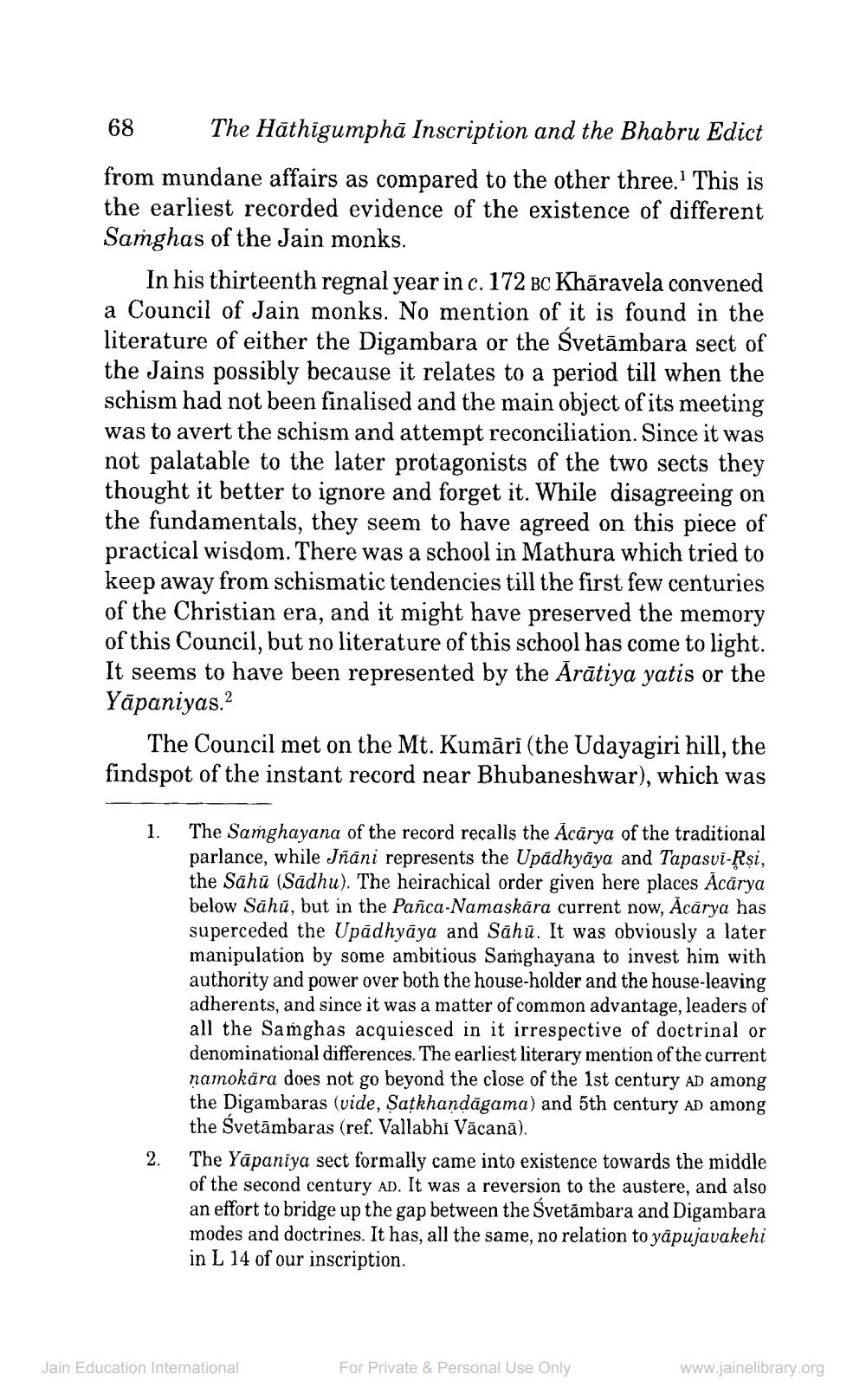________________
68
The Hāthigumpha Inscription and the Bhabru Edict
from mundane affairs as compared to the other three. This is the earliest recorded evidence of the existence of different Samghas of the Jain monks.
In his thirteenth regnal year in c. 172 BC Khăravela convened a Council of Jain monks. No mention of it is found in the literature of either the Digambara or the Svetāmbara sect of the Jains possibly because it relates to a period till when the schism had not been finalised and the main object of its meeting was to avert the schism and attempt reconciliation. Since it was not palatable to the later protagonists of the two sects they thought it better to ignore and forget it. While disagreeing on the fundamentals, they seem to have agreed on this piece of practical wisdom. There was a school in Mathura which tried to keep away from schismatic tendencies till the first few centuries of the Christian era, and it might have preserved the memory of this Council, but no literature of this school has come to light. It seems to have been represented by the Ārātiya yatis or the Yāpaniyas.
The Council met on the Mt. Kumāri (the Udayagiri hill, the findspot of the instant record near Bhubaneshwar), which was
1.
The Samghayana of the record recalls the Acārya of the traditional parlance, while Jñāni represents the Upadhyāya and Tapasvi-Rşi, the Sāhū (Sadhu). The heirachical order given here places Ācārya below Sāhū, but in the Panca-Namaskara current now, Ācārya has superceded the Upadhyāya and Sahū. It was obviously a later manipulation by some ambitious Samghayana to invest him with authority and power over both the house-holder and the house-leaving adherents, and since it was a matter of common advantage, leaders of all the Samghas acquiesced in it irrespective of doctrinal or denominational differences. The earliest literary mention of the current namokära does not go beyond the close of the 1st century AD among the Digambaras (vide, Satkhandāgama) and 5th century AD among the Svetāmbaras (ref. Vallabhi Vācanā). The Yāpaniya sect formally came into existence towards the middle of the second century AD. It was a reversion to the austere, and also an effort to bridge up the gap between the Svetāmbara and Digambara modes and doctrines. It has, all the same, no relation to yäpujavakehi in L 14 of our inscription.
2.
Jain Education International
For Private & Personal Use Only
www.jainelibrary.org




